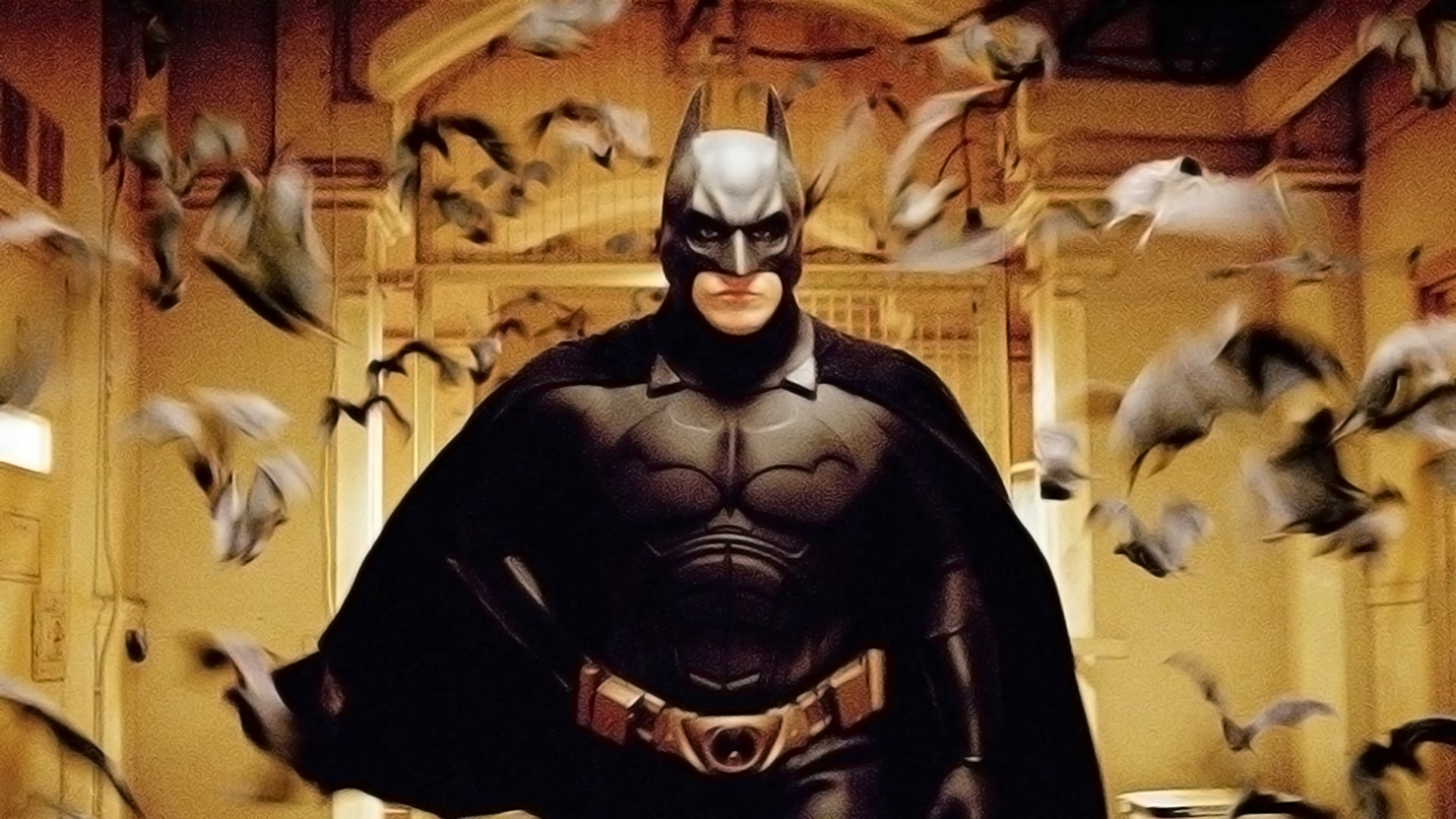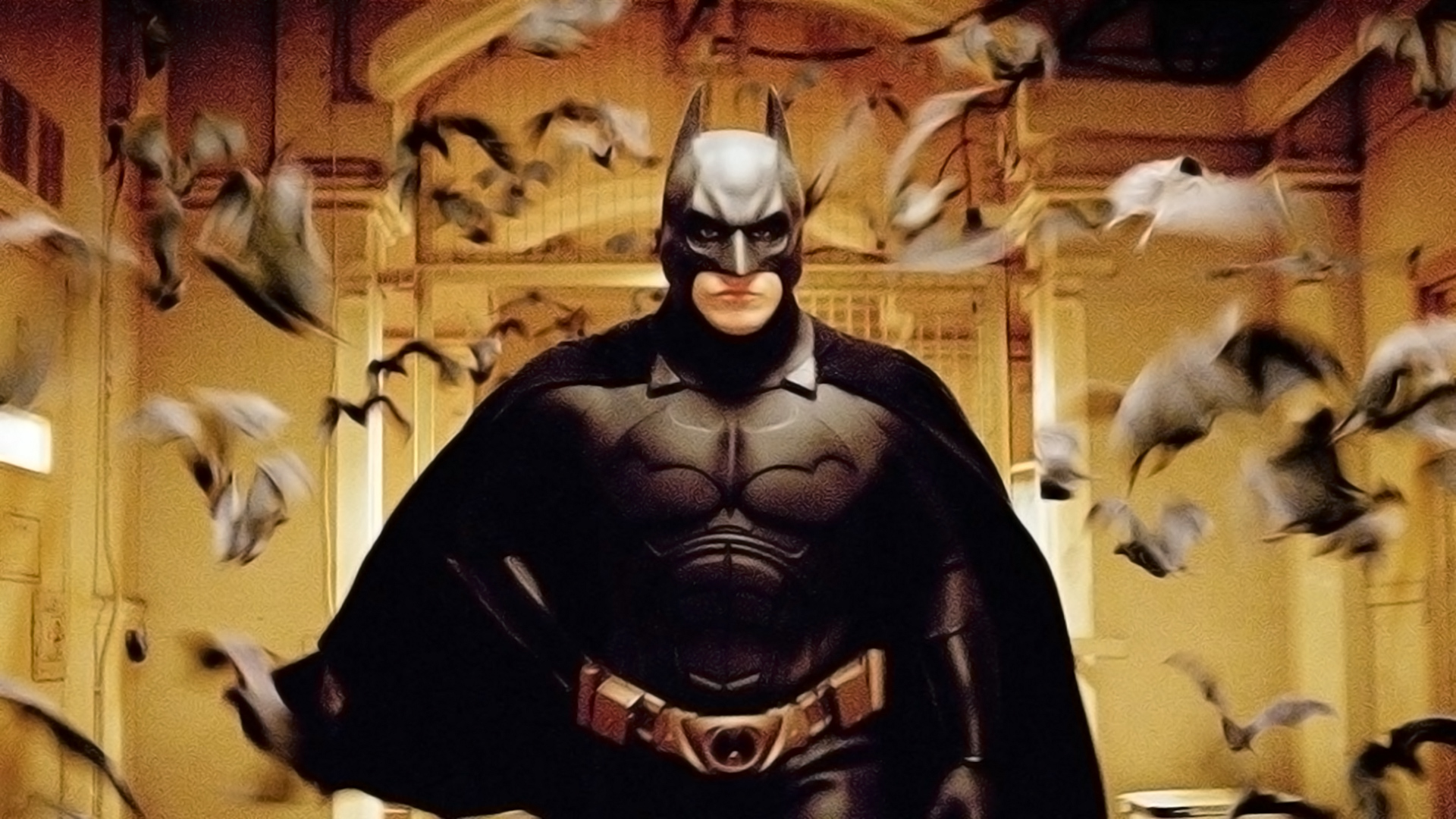

The look and style of Batman have changed over the years, from the character's origins in comic books through 60s TV to big screen success from the late 80s into the 21st century. Sound has played a major role in the Caped Crusader's film adventures, helping create a world for Gotham City and its deranged villains. Kevin Hilton traces the Dark Knight's aural development and focuses on 2005's Batman Begins.
Suave but troubled millionaire businessman Bruce Wayne and his avenging vigilante alter ego Batman first appeared in print within the pages of a 1939 edition of Detective Comics. The character proved so popular that two film serials were made in the 1940s. These are not great examples of filmmaking - and the sound is basic - which may explain why Batman did not return to screens until the 1960s.
This was the much-loved campy TV series starring Adam West, with Burt Ward as sidekick Robin and Bruce Wayne's youthful ward, Dick Grayson. The visual look was based heavily on the comic books; bright primary colours and on-screen graphics instead of sound effects for the fight scenes. The 'Zap!' and 'Pow!' captions were accompanied by brassy music stabs that are as memorable as Neil Hefti's theme.
After a long gap, Batman returned to the big screen making a big jump forward both visually and audibly. Director Tim Burton made the Dark Knight dark again, with a Gotham City that not only looked Gothic and dangerous but sounded menacing and strange as well. Dolby Stereo was still the main surround format at the time, but the audio team used the matrix technology to the full.
There are plenty of gunshots, traffic effects and crowd noises panned round the audio plane. Danny Elfman's superb, percussive music adds a further dimension, with some parts placed in the rear loudspeakers. Set pieces include the showdown between Batman (Michael Keaton) and Jack Nicholson's Joker and there is a low-key but effective example of how surround can create reality when Vicki Vale (Kim Basinger) turns on lights in an office. The sound moves towards the audience as each fixture comes on, giving a sense of depth.
Dolby Digital
The sequel, Batman Returns (1992), was the first film released in Dolby Digital. This discrete surround format brought better separation between the rear channels and front speakers, creating a greater sense of movement and positioning. Two more sequels, directed by Joel Schumacher, followed, but, although the audio and music were still high quality, characterisation and story dropped off alarmingly.
It looked as though the Bat's cinema career was over but you can't keep a good superhero down. Batman was rebooted in 2005 with an 'origin story' starring Christian Bale as Batman/Bruce Wayne. Batman Begins was the first part of what became known as the Dark Knight Trilogy. All three were directed by Christopher Nolan who stipulated a more realistic look and tone for the films.
On screen this involved using real streets and buildings rather than the elaborate stage sets of the previous film series. Nolan also asked for the sound to reflect this shift in approach. "Chris wanted real sounds to match the locations and images," Andy Kennedy, a member of the sound effects design team, told me in 2005. Kennedy handled general effects and also worked with James Boyle, who oversaw the sound of the Batmobile.
Creating the sounds
Batman's wheels have always been like a supporting character; in Batman Begins Bruce Wayne adopts a prototype Hummer-tank hybrid known as the Tumbler as his vehicle. Three real-life versions of this bulbous monster were made for the film shoot. Its sounds were recorded by Danny Handbrook, who miked it up using a DPA on the exhausts, a Schoeps on the manifold, a rifle mic for the wing, an MS rig for the interior, a mono on the servo and a Sennheiser 416 on the side.
Handbrook's multitrack recordings were augmented with other elements to give even more weight to the Batmobile's sound. Boyle sampled a 747 turbine, modified it and added that to the existing engine sounds. Afterburner effects were created from recordings of a jet car made by Kennedy, although the sheer force of the engine nearly defeated the audio technology. "The first recording was overpowered by the force of the engine," Kennedy explained. "So I put in a -20dB pad and stood further away." Natural but treated sounds of big cat voices, horses galloping and animal screams were added to represent revs, wheel sounds and tyres screeching, respectively. All this went towards creating the "grungy" sound for the Batmobile that Nolan wanted.
The temp mix stages proved useful in getting closer to what Nolan was looking for. Supervising sound editor Stefan Henrix, who supervised dialogue and ADR while his opposite number David Evans oversaw effects, said the first temp mixes were something of a learning curve that helped get to what the director had in mind. An example of this was the hallucination scene featuring the villain known as The Scarecrow (played by Cillian Murphy). This went through three to four temp mixes, with the final version involving Murphy's voice being treated with a Vocoder and augmented by alligator sounds. The end result was then played through an Eventide harmoniser.
A feature of modern Batman is the differentiation between the character's voice when he's in the Bat Suit and when he's Bruce Wayne. Since Michael Keaton, Batman has spoken with a low, gruff tone, particularly on the much-imitated line, "I'm Batman!”. For Batman Begins different treatments were applied to Christian Bale's voice but, in the end, it was decided to let the actor make the distinction in performance by lowering his pitch. However, in two scenes, dialogue mixer Gary Rizzo rolled in some bottom end to increase Batman's gravitas.
Batman on film continues to evolve, with Ben Affleck taking over the role and now Robert Pattinson announced for The Batman, due in 2021. With the immersive Dolby Atmos now available, sound will continue to play a major role in the Caped Crusader's adventures.
Tags: Audio


Comments